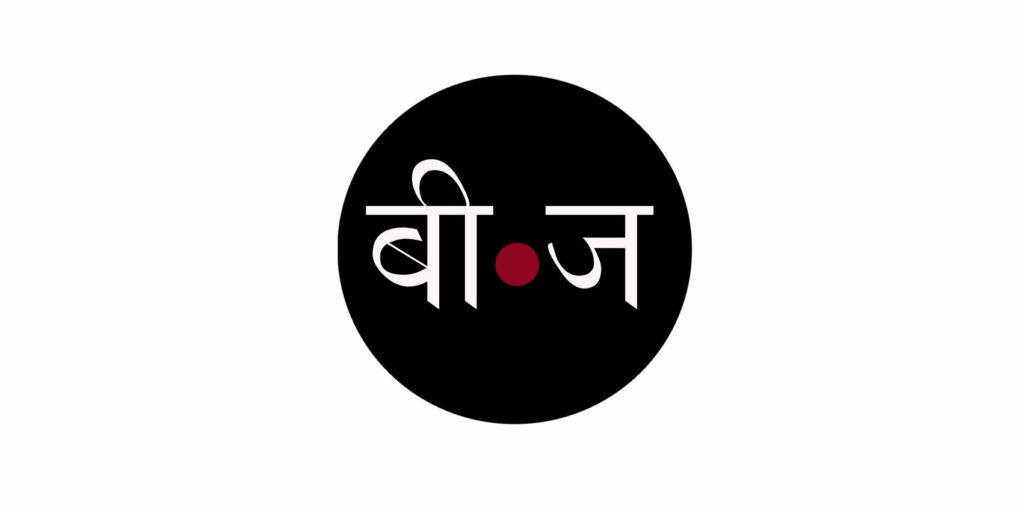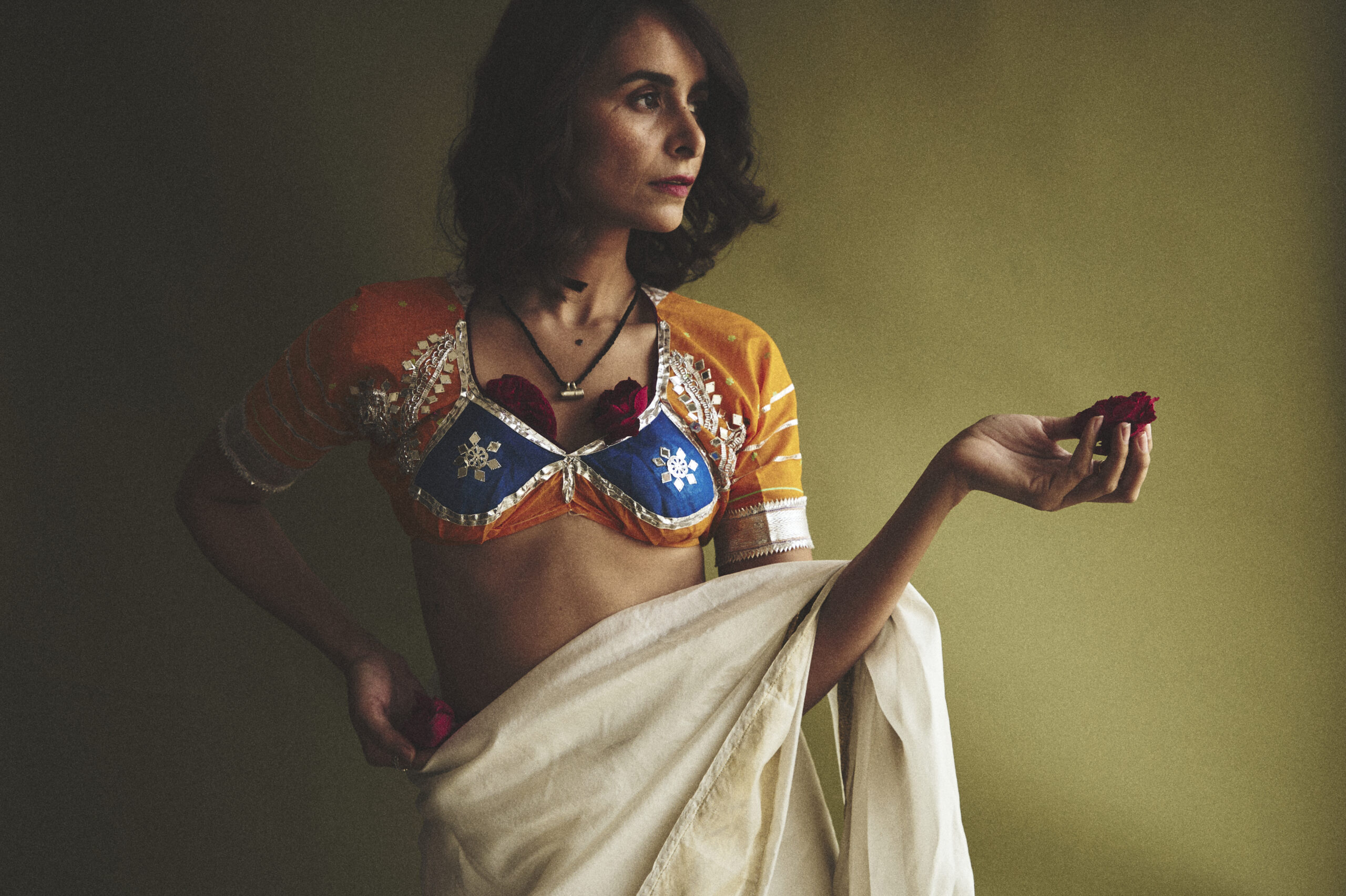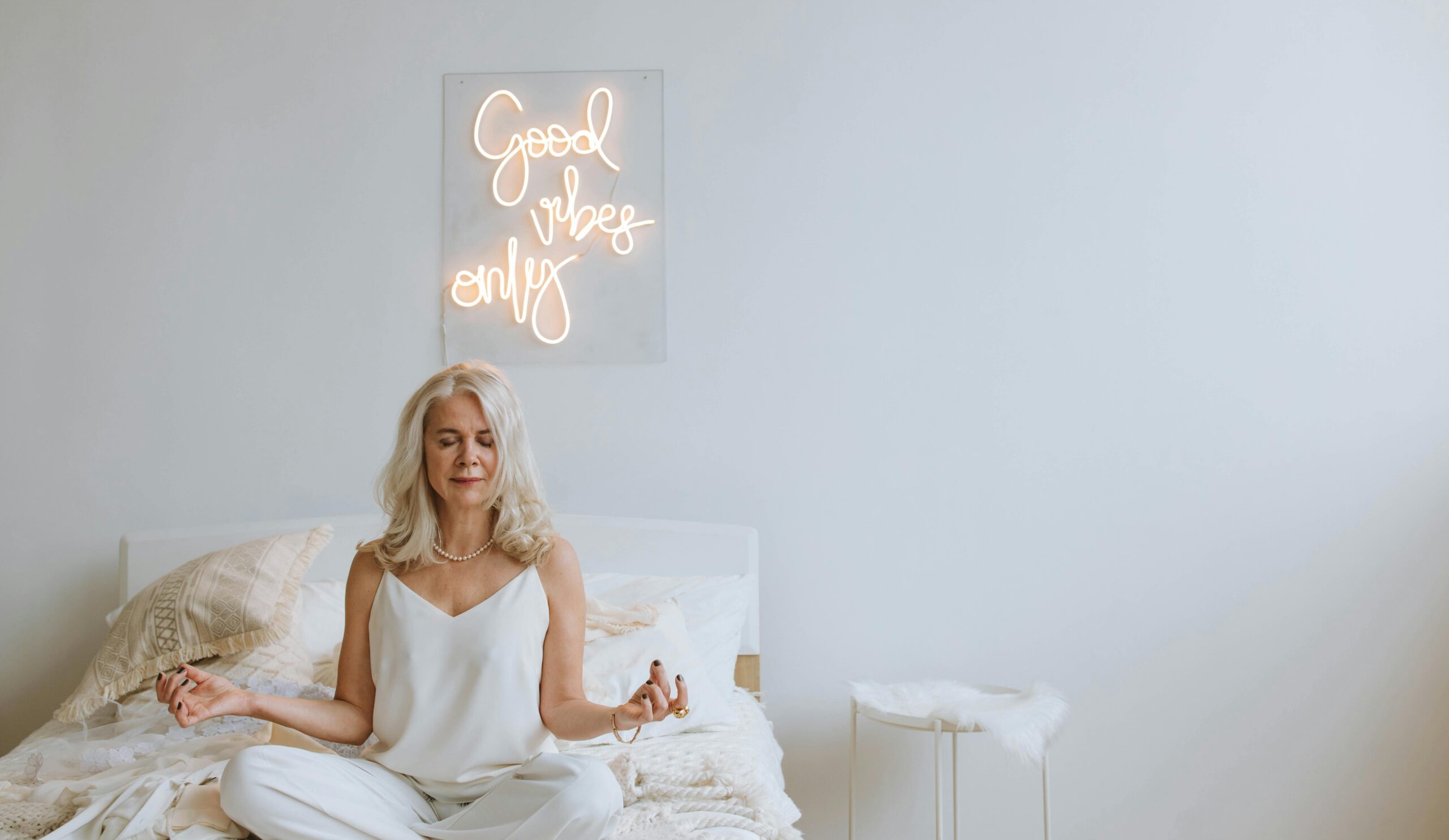Mastering Colourful Living with Annie Sloan
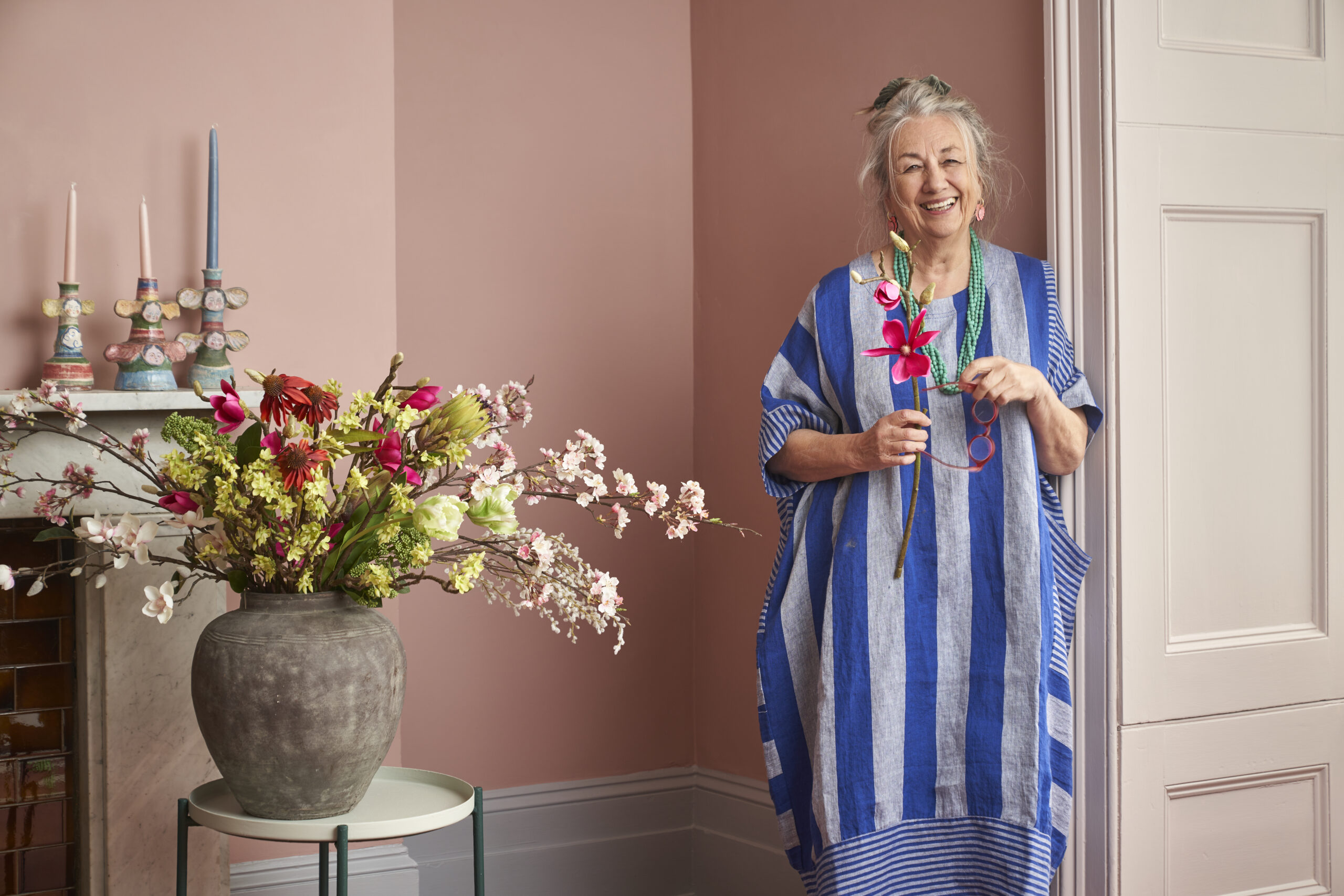
Ever since I was a child, I have been obsessed with Annie Sloan’s chalk paints, which she launched way back in 1990. At the time, paints weren’t readily available in India, so I muddled my way through my shabby chic phase with ordinary acrylic paint and sandpaper. Sloan, considered one of Britain’s most influential designers, has since expanded her range to include satin and wall paint and has authored over two dozen books. I had an incredible opportunity to meet her on a recent visit to India and chat with her about Beejliving on sustainability, entrepreneurship and her travels through India.
What was the inspiration for you to start your business? Was your age or gender perceived as a challenge at that time?
I trained as a fine artist at Croydon School of Art and Reading University. After university, I painted murals for a living and learned about pigments, paint and different paint techniques. My interest in paint effects led to me writing my first book, The Complete Book of Decorative Paint Techniques–which is now considered to be the industry bible on the subject.
I started teaching paint techniques and soon realised there was a gap in the paint market for a no prep, matte finish paint. A chance encounter in Holland led me to find a paint factory in Belgium that could make the versatile paint for furniture I was looking for and I launched Chalk Paint in 1990
My revolutionary Chalk Paint quickly gained a global demand and the business moved from a small shop to a warehouse and paint factory in Oxford where, over 30 years later, the family-run business is still based.
I started my business when I was in my early 40s. I had a family and I had life experience. I think that being a bit older helped people take me more seriously than if I had been in my 20s. I do remember visiting factories and the owners telling me that it was impossible to make a paint colour without black in it. I knew they were wrong but, I think because I was a woman, they didn’t take me as seriously as if I had been a man.
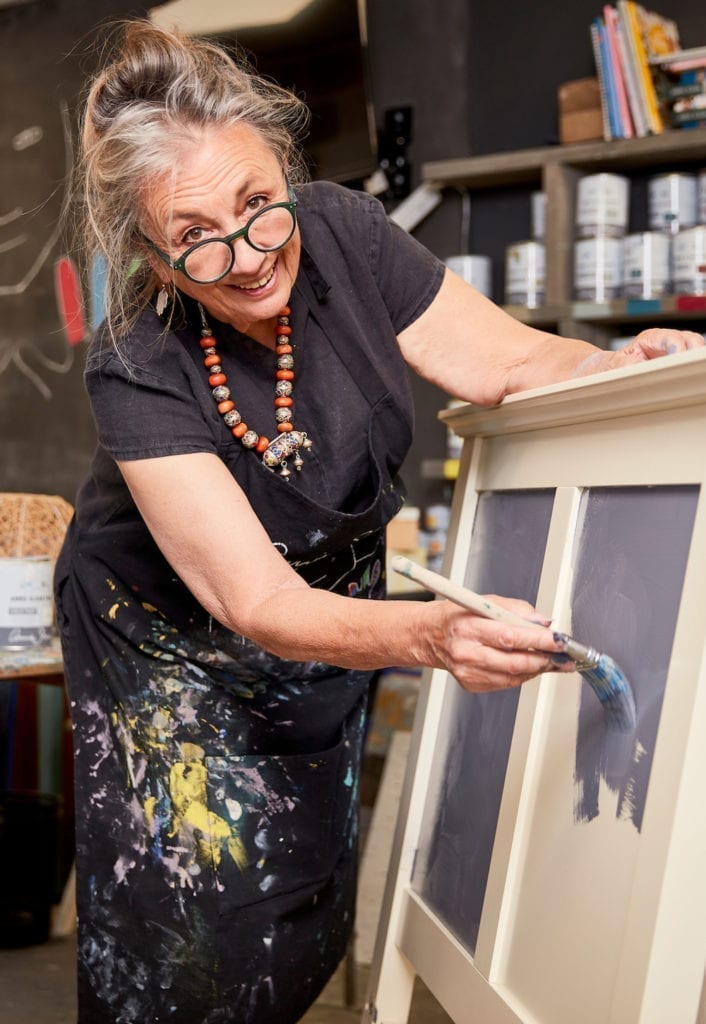
I used to have an advertising campaign which said “My paint is made for girls but boys can use it too”. What I meant by that is it was made for women who didn’t have time for sanding and prepping and just wanted to get on with painting and get something done in a day.
I found men didn’t believe you could paint without hours of preparation beforehand. Women are motivated by the end result, rather than the process.
I had to get rid of the slogan in the end as I was worried I would be accused of being sexist rather than empowering!
Your signature Chalk Paint has revolutionised the furniture painting industry and brought upcycling in the limelight. What inspired you to develop this unique product, and what sets it apart from traditional paints?
I was inspired to invent Chalk Paint because I wanted a versatile furniture paint. With no need for sanding or priming, you can simply pop open the tin, roll up your sleeves, dip in your brush and apply paint to furniture. I wanted to be able to paint furniture and flooring. I wanted something that could be used to dye fabric and even to paint glass!
Chalk Paint is suitable for beginners and furniture painting professionals alike; it’s the fool-proof furniture paint which can be used to create any look you require.
What sets it apart is firstly, the quality of the paint. All our Chalk Paint, Satin Paint, and Wall Paint are made in our on-site factory at Annie Sloan HQ in Oxford, UK. This means we have total control over the quality of our paint. Our promise to you is that every tin contains a pigment-packed formula designed to give you unparalleled coverage, confidence in its long-lasting durability, and ultimately, joy, in every shade!
Secondly, because I am a fine artist, each colour has been personally created by me in my studio. Combining premium pigments with my knowledge of the history of interiors means my colours have a depth of colour and are subtly unmatched by other paint companies.
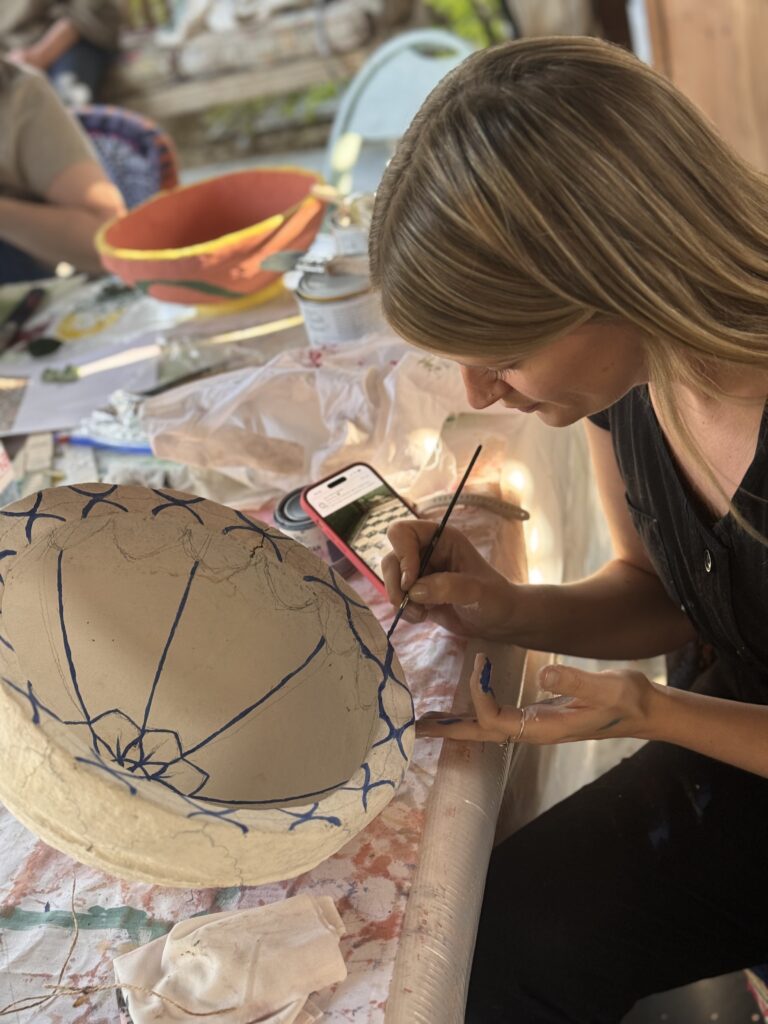
Could you elaborate on how Indian culture, art, and aesthetics have touched you?
You will find Indian influences in so much of British design.
Indian design has been influencing British design since the 16th century – from crewel to chintz, from block printing to beading. The Victorian era saw Britain falling in love with India with Queen Victoria declaring the country Britain’s greatest trading partner which popularised Indian fashion, jewellery and design.
There was a huge revival of interest in Indian design in the 1970s when the hippies discovered the country. I was part of that generation so the designs and colours of India are particularly important to me. Of course, the contrast of vibrant, bright colours is one of the first things that comes to mind when thinking of India.
I didn’t visit until 2020, just before Covid. I was blown away by the country – to finally see it with my own eyes was incredible.
Can you share about your travels to India and the recent workshop in Rajasthan?
In January 2020 I visited Mumbai, Jodphur, Jaipur and Udaipur on a trip to Rajasthan. I visited palaces, villages, spice and flower markets, temples and gardens. I absolutely loved my visit there, so in January 2024, I arranged an exclusive, once-in-a-lifetime six-day Annie Sloan Furniture Painting Retreat at Bujera Fort near Udaipur. I chose Bujera Fort for its inspiring beauty, splendour, and comfort – as well as its proximity to world-famous cultural landmarks.
I taught 16 people from all over the world techniques from gilding to fabric painting. It was a wonderful experience so I will be holding another Retreat in Bujera Fort early next year. I am also planning to visit in October to hold some more workshops with my stockists.
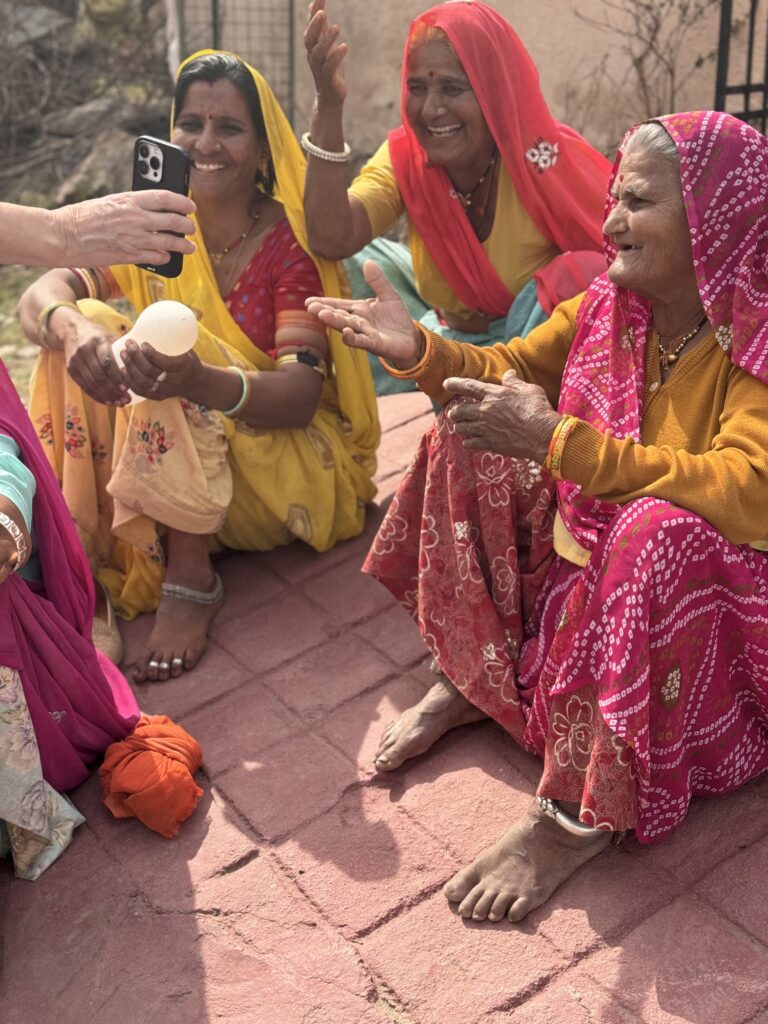
What specific aspects of Indian craftsmanship and culture resonate most with you, and how do they inform your creative process?
I am a colourist so I love Indian colours – the juxtaposition of bright colours is wonderful. I was fairly familiar with Indian fabric design, but having visited the country I now see how broad and incredible it is – from simple block printing to extraordinary silk designs.
I was also utterly entranced by the painted walls in the City Palace in Udaipur. They are simply beautiful.
How can we get Annie Sloan chalk paints in India?
Aashna Monga is an Annie Sloan stockist based in Mumbai. I did a workshop with her brand Paint Momzy in Mumbai when I visited after the Retreat in January. Akshita P Chadda who owns Artsy Nest is also a stockist based in Hyderabad. They both run workshops and sell my Annie Sloan paint.
I will be back in October. I am planning to visit Delhi, Mumbai and hopefully Hyderabad and Bangalore.
Your work often celebrates the beauty of imperfection and the patina of age. How does this philosophy tie into your views on sustainability and conscious consumption?
I love that handcrafted objects aren’t perfect. It shows they don’t come from a factory.
A handmade piece is a one-off unique piece. Old pieces with imperfections and the patina of age have character.
I love a wobble in the line.
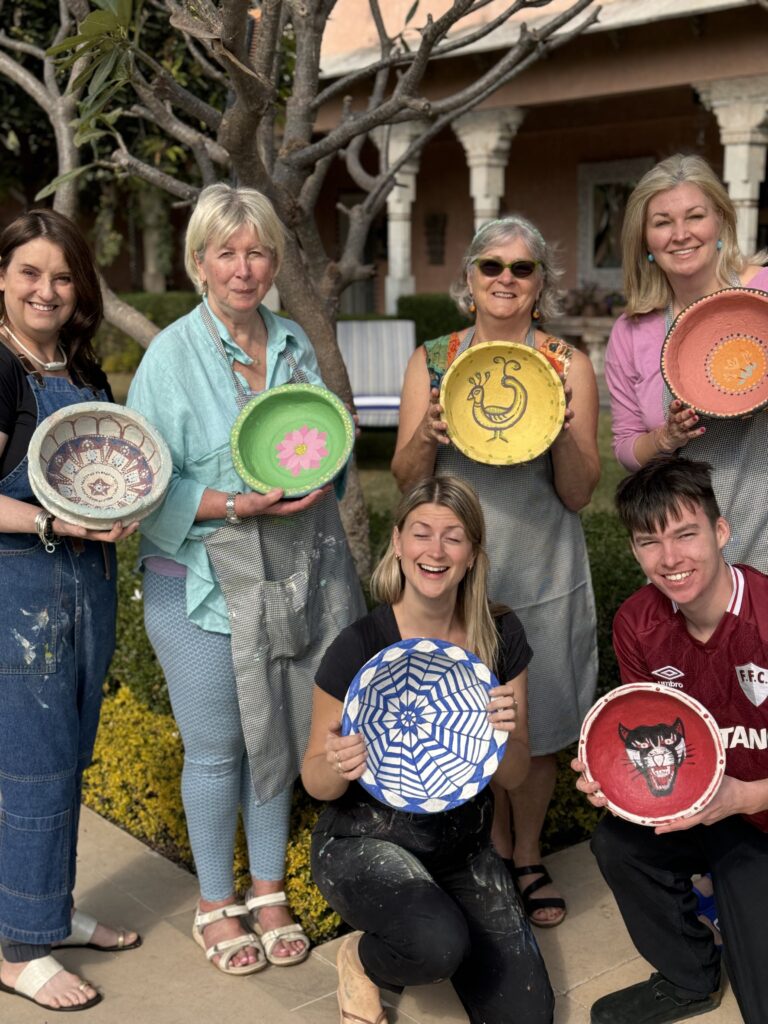
Looking ahead, what do you envision as the future of sustainable design, and how do you hope to contribute to it through your work and advocacy?
It is the future.
My Chalk Paint is ideal for upcycling and refreshing furniture you already own, or locally-bought second-hand furniture. Doing this instead of buying new saves perfectly salvageable furniture from landfills, reduces the amount you consume, and could therefore dramatically reduce your carbon footprint.
By refreshing and rejuvenating your furniture, you’re taking part in an eco-conscious practice: reducing, reusing, and recycling only once something reaches the absolute end of its lifecycle.
So thank you, for choosing to reuse and re-love the furniture you already own. And for using our no-fuss paint to do so.
My Chalk Paint also promotes mindfulness by offering a therapeutic outlet for creativity and self-expression.
My core values emphasise the power of painting and upcycling as a meditative practice. Through the process of painting, individuals can unravel the stress and anxiety that may be plaguing their minds, allowing them to focus on the present moment and the act of creation. This mindful painting process not only provides a means of relaxation but also fosters a sense of accomplishment, contributing to overall well-being.
Please share a message for women who would like to create and grow sustainable enterprises while juggling a family and home. What advice would you give them?
Don’t delay. It’s never the right time to juggle business and family so just do it. Use social media to help promote and sell. Don’t listen to naysayers. Pick up that brush and get going.
When I started I had a big dream of being in lots of countries. We could hardly pay the bills but you have to have a big vision as well as an everyday plan.
